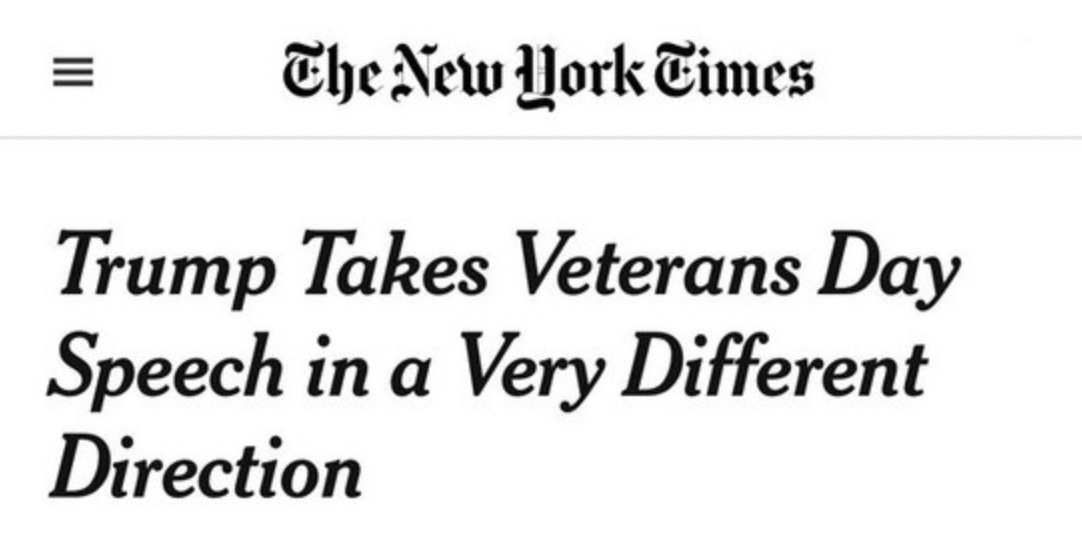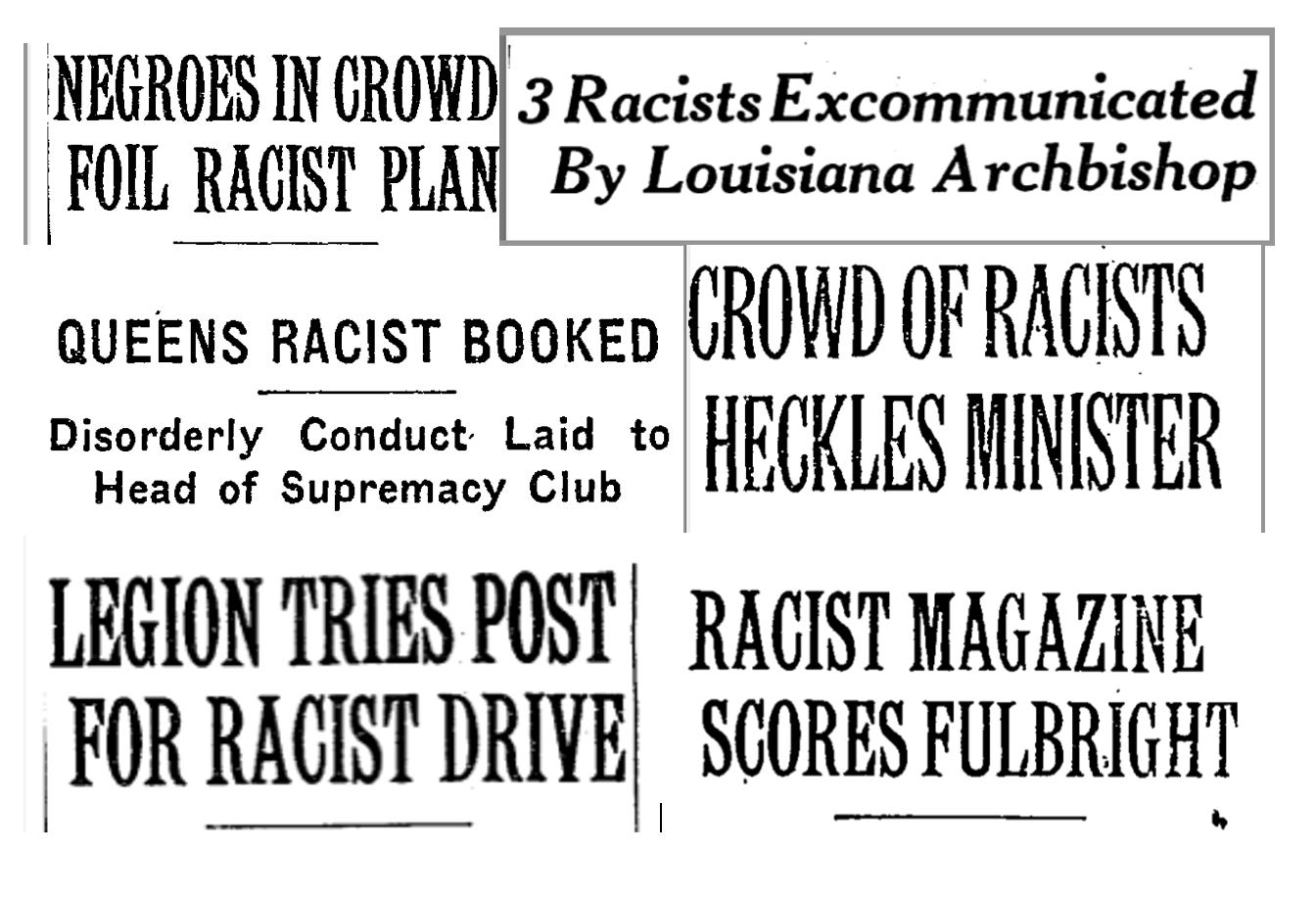In recent weeks, the New York Times has been completely embarrassing itself by using some incredibly watered-down, mealy-mouthed headlines for articles that describe acts of alarming political extremism.
For instance, when former president Donald Trump denounced his political opponents as “vermin” who would suffer brutal retribution during his second term — a clear call-back to the violent fascist agitprop of Adolf Hitler — the Times wrapped it in the incredibly benign packaging of “Trump Takes Veterans Day Speech in Different Direction.”
There has been considerable criticism from all corners of the Times’ bizarre headlines, with some effect. After the public outcry, the paper changed the headline above to “In Veterans Day Speech, Trump Promises to ‘Root Out’ the Left.” Closer, but still no sense of the exterminationist cries about “vermin.”
For historians, I think the Times recent headlines have been especially frustrating, for we spend our day jobs searching through back issues of that newspaper and others, and we know for a fact that the Times used to be able to write headlines that offered clear-eyed accounts of what was happening without mincing words.
It’s become a running joke in recent years that the Times and other newspapers can’t bring themselves to use the word “racist” to describe individuals and actions who are clearly racist, bending over backwards to use contorted terms like “racially-charged language” or framing things as “critics suggest ____ is racist” and so on.
But back in the late 1950s and early 1960s, even before the civil rights movement had its moments of triumph, the New York Times had no problem at all calling racists “racist.” These are just a handful of results from a headline search of the term:
The same held true for other labels the Times would often shy away from these days, like “white supremacist,” “white nationalist,” “white terrorist” or “segregationist.”
Likewise, the Times used to have no problem proclaiming a position as “extreme” or labeling individuals as “extremists".”
Well, how about “fascist”? The Times was a bit more circumspect using that label, presumably believing that its employment in World War II was limited to actual, self-styled fascisti.
And yet the paper still ran accusations of fascism in its headlines, as long as it could place the word in quotation marks thanks to a source. During the Goldwater campaign, both sides threw the term around and the Times was happy to quote them:
The frank assessments offered by the New York Times in this era seem a bit shocking to us today, when the paper relies more and more on euphemisms and empty phrases to describe alarming developments that demand a clear and compelling accounting.
In an era of clickbait headlines and efforts to maximize Google hits, it seems almost counter-productive for the paper to water its headlines down to a bland nothingness. Whether this is the result of the publisher’s political biases or some editors’ fear that Spiro Agnew will rise from the grave and accuse them of “bias,” I can’t say.
But I can say it wasn’t always this way.
And, honestly, if we’re going to hang on to our democracy, it can’t stay this way.








BRAVO! BRAVO! BRAVO!
Forget The NY Times. It’s run by a bunch of anti union transphobes and deserves to be thrown onto the ash heap of history. May they step barefoot on legos for the rest of their lives.